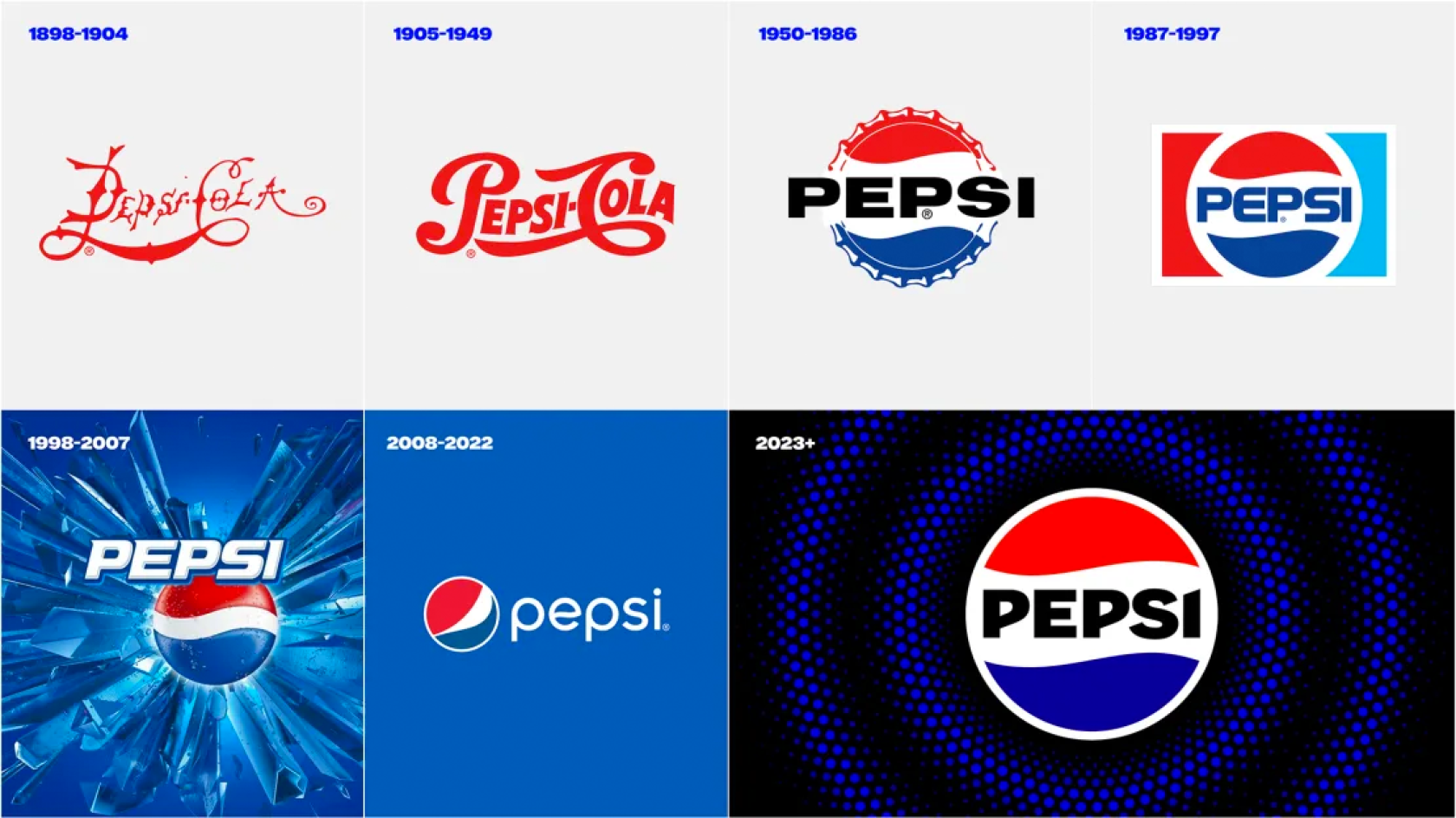

The great marketers challenge…
My brand is losing relevance, a shiny new competitor has redefined the category, our image is looking a bit tired.
I want, I need to do SOMETHING new – but I’m nervous about how much to change.
When deciding to evolve a brand image – there are some guiding principles to consider that both mitigate risk but also ensure you are headed towards a successful outcome.
“Enough change to notice and attract new users, but not enough to risk putting off existing”… of course this is the dream solution, but it’s not the easiest to navigate.
You’ve been in market for a period of time and have conditioned your buyers to find, navigate and remember you in certain ways. This may be colours, visual patterns, distinct icons or even just the structure of it all together, but if you don’t TRULY understand what the consumer sees as your DBA, you won’t know what to hold onto, maximise or change.
Take Pepsi – who for decades have been evolving and pushing new brand evolutions as a means to connect with new audiences, but recently, when conducting a review of a youth segment and asked them to draw the Pepsi brandmark, a majority of users sketched a brandmark they had never actually experienced. This was the classic 80’s Pepsi expression familiar in movies like Home Alone, and imprinted on minds globally as the quintessential Pepsi DBA.
What felt like a nostalgic throwback, was actually a true point of connection to a lived DBA expectation.

Perhaps in your review, you discover perhaps you don’t have an equivalent of the McDonald’s Golden Arches, or a Fruit Loops Toucan to act as the anchor point to your brand. You can still affect a great evolution by maintaining the visual patterns your consumer is used to following, whilst playing with individual elements for increased connection.
Hellmann’s maintained their message hierarchy and visual ratios (largely), to great effect, creating a totally familiar, yet smartly elevated evolution.

The risk of alienating existing customers, vs attracting new ones is ever present.
Deciding on the primary objective and greatest opportunity is vital to ensuring you remain focused on the end goal – and not get lost in indecision or fear.
Deciding on the single primary objective allows you to clarify the degree of change you anticipate is needed and assess the work objectively, we can help you with this.
Did Elon align on his objectives when revealing X to the world? It’s honestly hard to say.